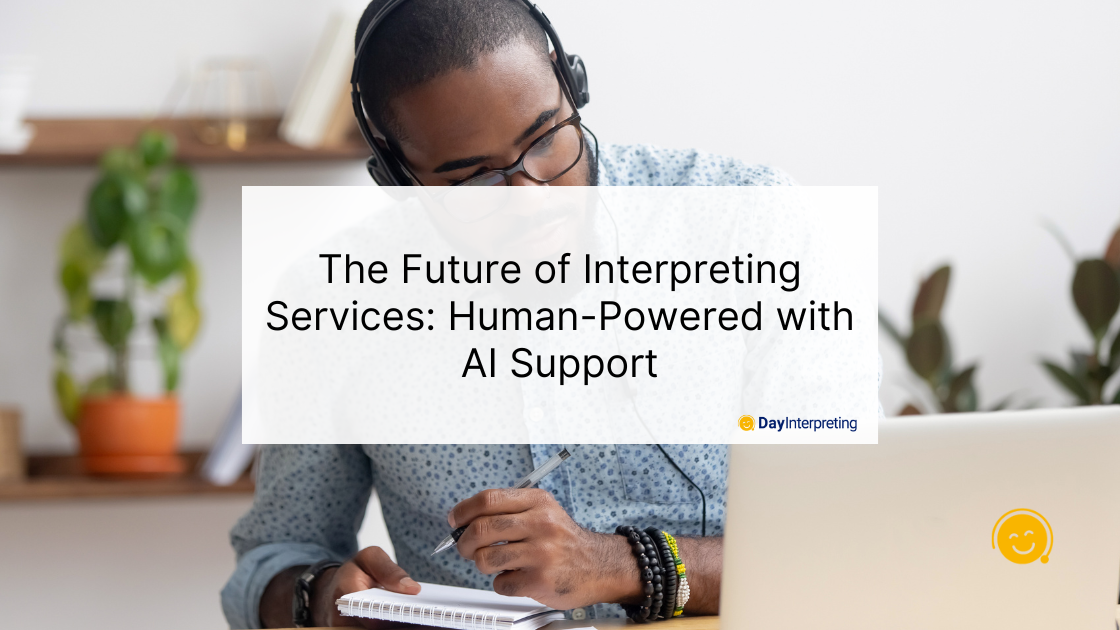In a rapidly globalizing world where communication knows no boundaries, interpreting services play a pivotal role in facilitating understanding among people who speak different languages. The traditional model of interpreting, which relies solely on human expertise, is now being revolutionized by the integration of artificial intelligence (AI). This article delves into the evolving landscape and the future of interpreting services and explores how AI is becoming a valuable ally to human professionals, reshaping the future of this vital industry.
The Traditional Role of Human Interpreters
Human interpreters have been the backbone of the interpreting services industry for centuries, offering their linguistic expertise to bridge language gaps in various domains such as diplomacy, business, healthcare, and international events. These professionals possess not only language skills but also cultural knowledge and contextual understanding, allowing them to convey the nuances and emotions embedded in conversations.
The Limitations of Traditional Interpreting
However, traditional interpreting has some inherent limitations:
- Human Error: Even the most skilled interpreters can make mistakes, which can lead to miscommunication and potentially disastrous consequences, especially in high-stakes situations like legal proceedings or medical consultations.
- Scalability and Cost: Human interpreters are expensive and may not always be readily available, limiting their scalability for organizations with frequent or large-scale interpreting needs.
- Speed: Human interpreters may struggle to keep up with the speed of real-time conversations, causing delays and interruptions in communication.
- Data Management: Traditional interpreting relies heavily on the interpreter’s memory and experience, making it difficult to maintain a comprehensive record of conversations.
AI’s Role in Interpreting Services
AI is rapidly addressing these limitations and reshaping the future of interpreting services:
- Enhancing Accuracy: AI-powered interpreting tools can provide real-time language translation with impressive accuracy, minimizing the risk of human error. These AI systems, like Google Translate, use machine learning algorithms to continually improve their language models.
- Scalability and Cost-Efficiency: AI-powered interpreting can be more cost-effective and scalable, especially for businesses or organizations with recurring interpreting needs. Chatbots, virtual assistants, and automated interpreting services are increasingly being integrated into customer support and call center operations.
- Speed and Efficiency: AI can process information faster and more efficiently than humans, ensuring that interpreting services keep pace with the speed of conversation.
- Data Management: AI systems can store and analyze large volumes of conversation data, making it easier to review and learn from past interactions, which can lead to continual improvement in interpreting quality. Leveraging Oracle GoldenGate replication ensures real-time data integration and synchronization, boosting the accuracy and efficiency of insights from past conversations.
Human-AI Collaboration
While AI is transforming interpreting services, it is essential to recognize that it is not meant to replace human interpreters but rather to complement their abilities. The ideal model is one of human-AI collaboration. This approach leverages the strengths of both humans and AI to provide an even more robust interpreting service:
- Complex Contextual Understanding: Human interpreters excel at understanding cultural nuances, emotions, and complex contexts that AI may struggle to grasp. They can provide essential context to ensure accurate interpretation.
- Human Touch: In situations where empathy and human touch are crucial, such as medical or counseling sessions, human interpreters are irreplaceable in providing emotional support.
- AI’s Speed and Efficiency: AI can quickly translate documents, routine customer inquiries, and perform instant language translations, making the workflow smoother and more efficient.
- Quality Control: Human professionals can supervise and correct AI-generated translations, ensuring the highest level of quality in the final output.
The Future of Interpreting Services
The future of interpreting services will witness a dynamic coexistence of human interpreters and AI technologies. This collaboration will enable interpreters to focus on their core strengths of context and cultural understanding while AI handles routine and high-speed translation tasks. Organizational and individual clients can benefit from improved access to interpreting services, increased efficiency, and cost savings. This synergy between humans and AI will also enable interpreting services to keep pace with the ever-evolving technology landscape and emerging languages.





0 Comments